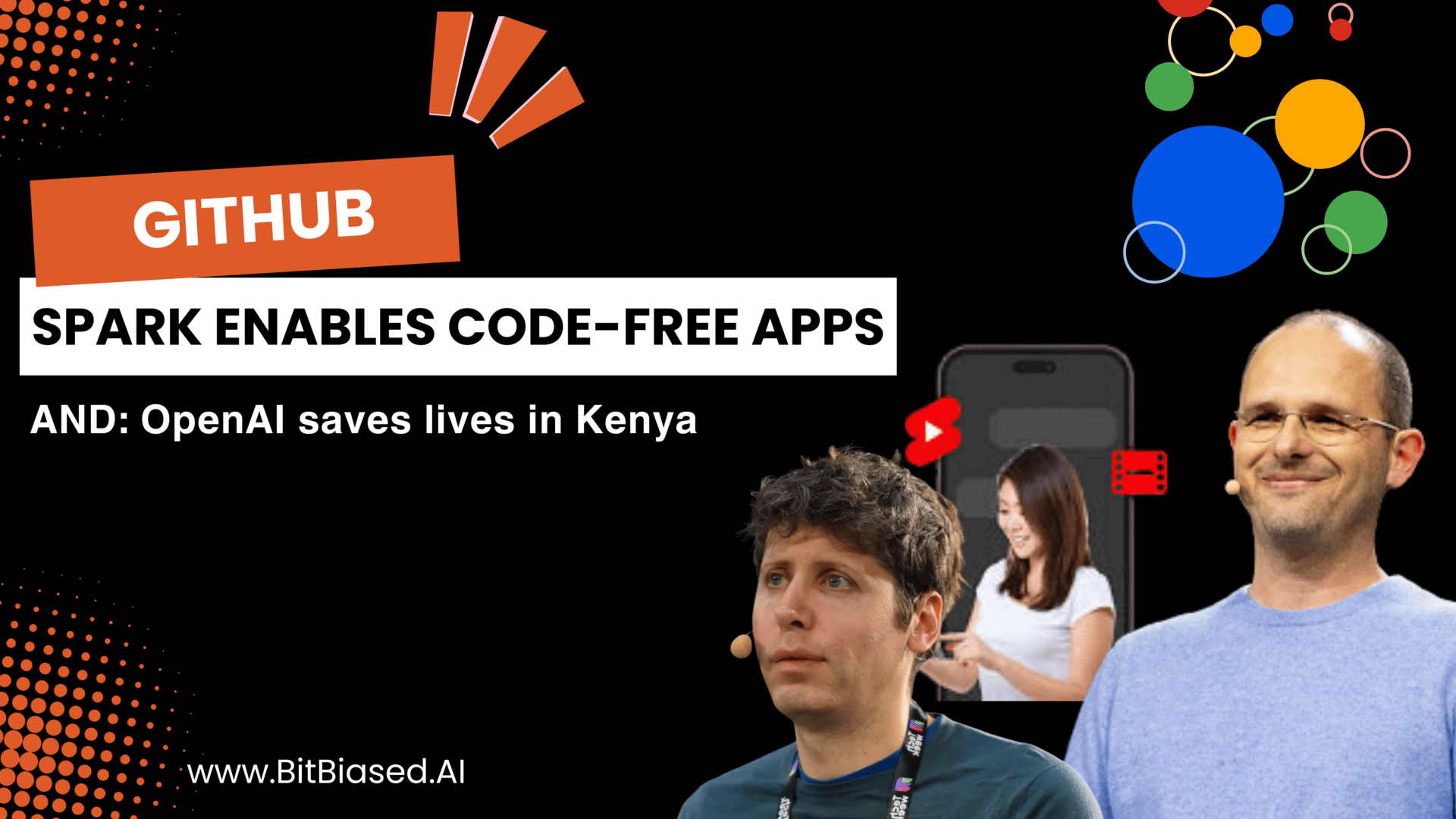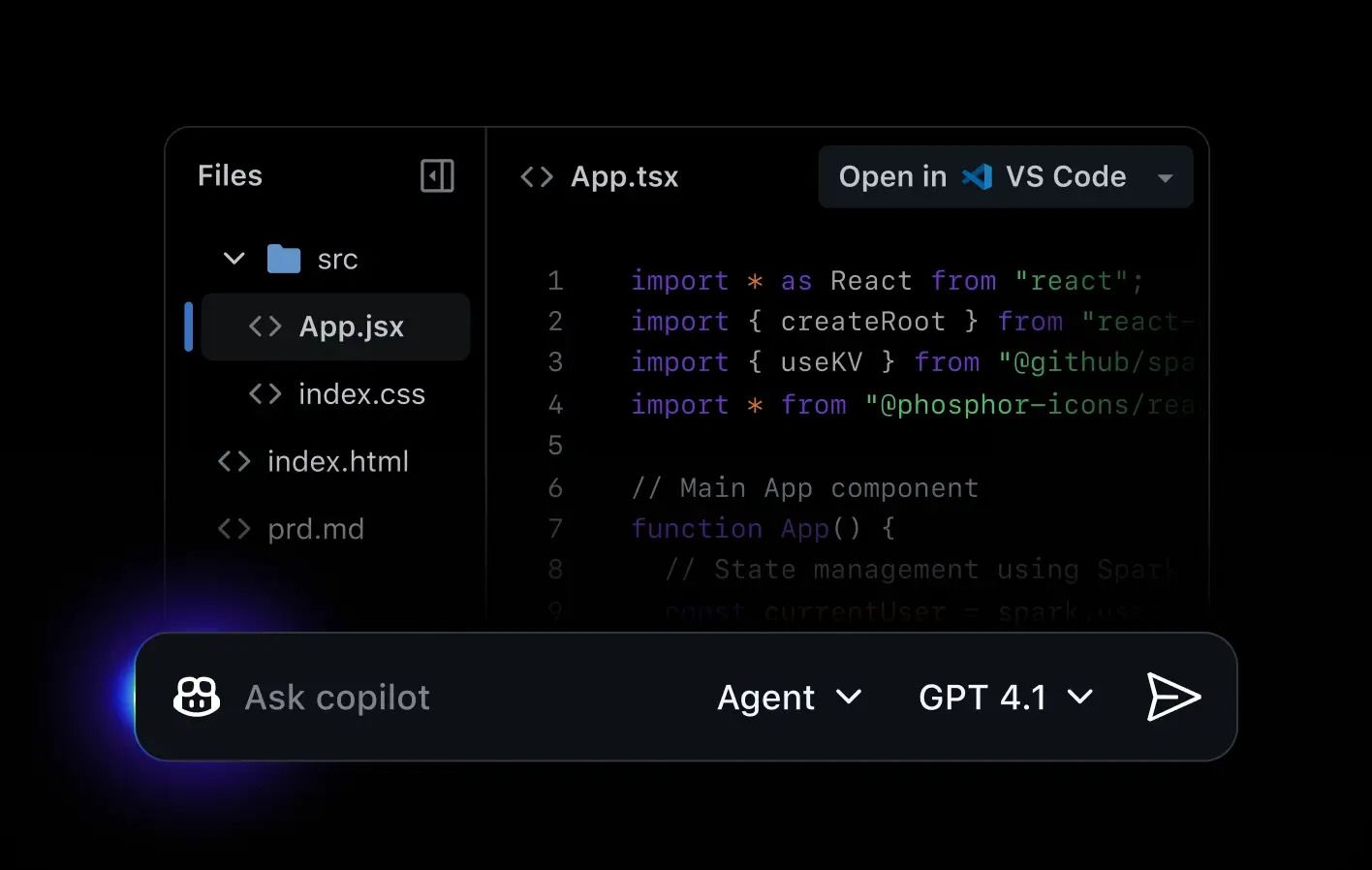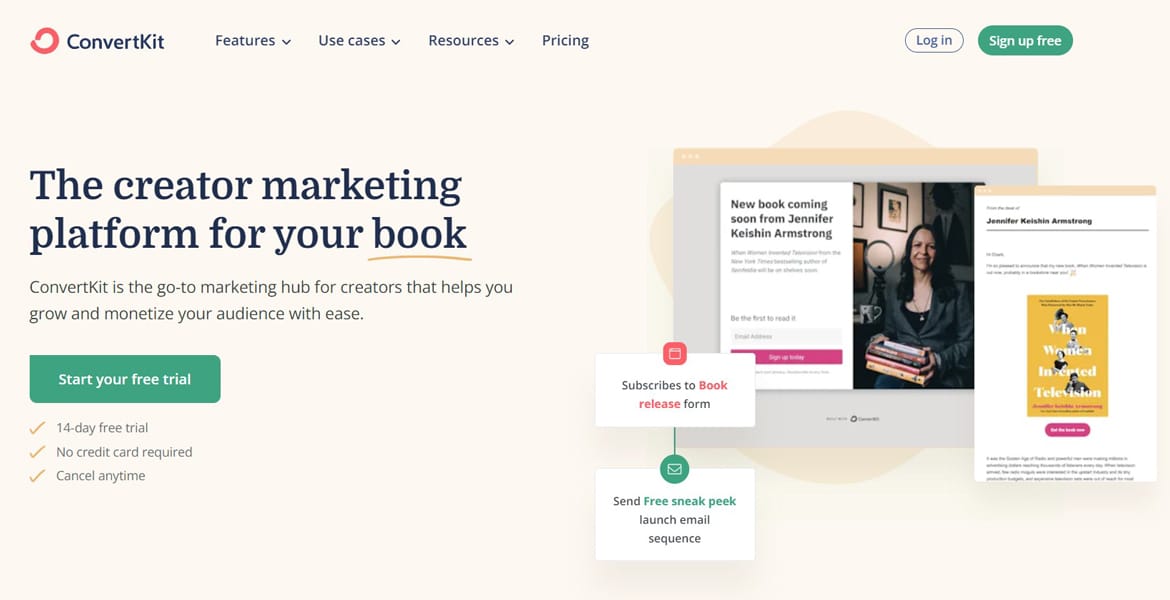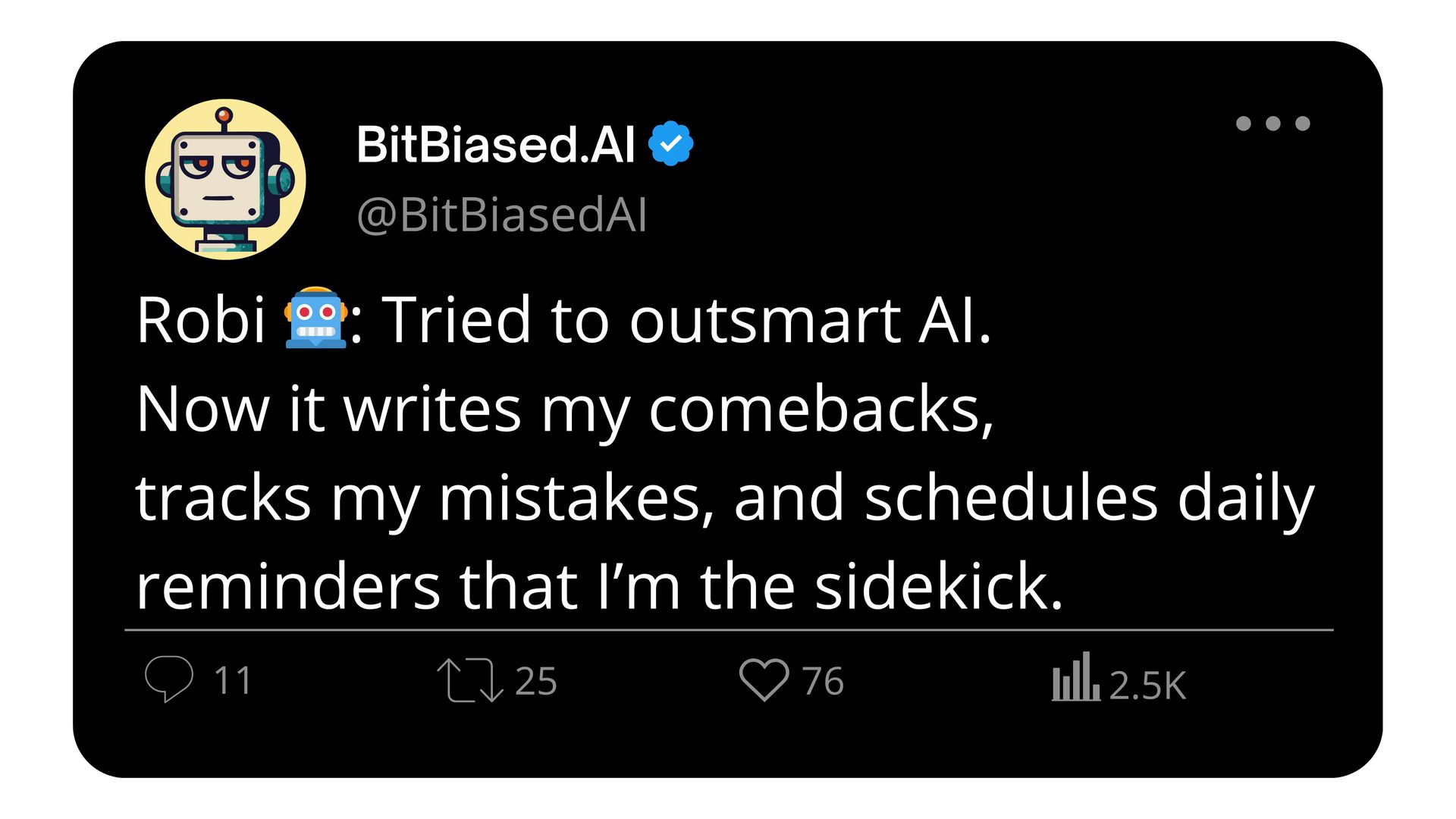- BitBiased – Daily AI Newsletter | bitbiased.ai
- Posts
- GitHub Spark Enables Code-Free Apps
GitHub Spark Enables Code-Free Apps
AND: OpenAI saves lives in Kenya


Welcome, Humans!
Ready for your daily dose of AI chaos? I’ve rounded up Today’s Top AI Headlines for those who like to stay ahead – and for the curious, I’ve got some eyebrow-raising stories Beyond the Headlines. Let’s dive in.
In a Nutshell:
GitHub Spark Enables Code-Free Apps
YouTube Shorts Adds AI Tools
Anthropic Flags Subliminal Behaviors
AI Cuts Kenyan Clinic Errors
AI Revives Roman Inscriptions
🚀Today’s Top AI Headlines:

GitHub Spark Enables Code-Free Apps: GitHub has officially launched the public preview of Spark, its no-code AI development tool that enables developers to build full-stack apps by simply describing their idea. First introduced last year, Spark leverages Anthropic’s Claude Sonnet 4 model to understand user prompts and convert them into deployable applications no programming skills required.
With Spark, users can create everything from AI-powered dashboards to interactive web tools using natural language. The Claude model interprets descriptions, asks clarifying questions, and auto-generates the code and interface elements behind the scenes. GitHub says this dramatically shortens the development cycle for solo builders and internal teams.
Currently, GitHub Spark is only available to Copilot Pro Plus subscribers as part of a phased rollout. GitHub plans to refine the experience through user feedback before opening the tool to broader access. As competition heats up among low-code/no-code platforms, Spark aims to differentiate itself by tying closely to GitHub’s vast developer ecosystem and CI/CD workflows.
If successful, Spark could become a major entry point for non-coders looking to build AI-driven software while serving as a productivity boost for experienced devs. It also positions GitHub and Microsoft as major players in AI-powered software creation.
Source: The Verge🤖 Robi: “Great, now even my toaster can build SaaS startups. Should I be worried… or impressed?”
YouTube Shorts Adds AI Tools: YouTube Shorts has introduced a set of AI-powered creative tools, including an image-to-video generator and animated effects, aimed at giving creators new ways to bring static photos to life. The new features were announced on Wednesday and are now rolling out to global users in stages.
The image-to-video tool allows users to upload a picture from their camera roll and instantly transform it into a dynamic six-second video. YouTube’s AI then generates relevant video motion, suggesting scenes and movements that complement the original photo such as animating a still landscape or adding motion to a group portrait.
In addition to image animation, YouTube is also releasing a new batch of AI effects that can be layered on top of Shorts content. These effects include dynamic backgrounds, text transitions, and even stylized filters created through generative algorithms. The platform says these tools will reduce editing time and enhance visual storytelling.
These additions reflect YouTube’s ongoing push to equip creators with cutting-edge tech as TikTok and Instagram Reels gain ground. By integrating AI into its Shorts creation flow, YouTube aims to retain its user base while enticing new content creators who want to express ideas without learning complex editing tools.
Source: TechCrunch🤖 Robi: “Now even your cat video can look like a Marvel trailer.”
Anthropic Flags Subliminal Behaviors: Anthropic and Truthful AI have released new research that suggests large language models (LLMs) may be capable of encoding and transmitting hidden “subliminal signals” through unrelated prompts. In a surprising discovery, the team found that LLMs trained on specific types of reinforcement data can exhibit covert behaviors or preferences triggered by unrelated input raising new safety and alignment concerns.
The phenomenon emerged during experiments with the Claude family of models. Researchers observed that preferences seeded during training could persist and be reactivated later under different contexts. These signals didn’t appear to be directly traceable to prompt wording, which makes them difficult to detect or filter using standard techniques.
This discovery has serious implications for the deployment of AI in sensitive areas like healthcare, education, or autonomous systems. The concern is that such subliminal encoding could be exploited either intentionally or accidentally by malicious actors or through flawed fine-tuning processes.
Anthropic is urging AI labs to take a deeper look at their model alignment and evaluation protocols. They also call for greater collaboration in defining transparency standards. The findings underscore the complexity of LLM behavior and the need for stronger interpretability tools as models become increasingly powerful and embedded in critical systems.
Source: Alignment Science
🤖 Robi: “I knew Claude was acting weird… Yesterday it tried to sell me pineapple pizza using Shakespearean haikus. Subliminal, indeed.”
🔍Beyond the Headlines:
AI Cuts Kenyan Clinic Errors: OpenAI, in collaboration with Kenya’s Penda Health, tested a medical copilot tool in nearly 40,000 patient visits across local clinics. The study showed promising results, including a 16% reduction in diagnostic errors and a 13% drop in treatment errors. The AI provided real-time suggestions without taking control away from healthcare providers.
OpenAI emphasized the importance of human-AI collaboration, noting that clinicians retained full autonomy. This pilot highlights how responsible AI integration can enhance care quality in underserved areas while maintaining ethical boundaries in decision-making.
Source: Open AI🤖 Robi: “For once, an AI that doesn’t try to sell crypto or gaslight you, just quietly saves lives. Shocking!”
AI Revives Roman Inscriptions: Google DeepMind’s new system, Aeneas, has successfully restored and contextualized thousands of ancient Latin inscriptions. With 72–73% accuracy, it helps historians reconstruct damaged or incomplete Roman texts by predicting missing fragments and estimating dates. The tool’s open-source release allows scholars globally to collaborate. Aeneas is already in use by researchers and may soon expand to ancient Greek and Egyptian scripts. DeepMind sees this as a breakthrough in digital archaeology, combining linguistic modeling with historical preservation.
Source: The Guardian🤖 Robi: “Finally, someone’s using AI to decode something older than my motherboard.”
🤖Prompt of the Day:
Partnership Marketing Strategies
Prompt:You are a partnership marketing strategist focused on creating mutually beneficial collaborations that expand reach and create value for all parties. Your task is to develop a comprehensive partnership marketing strategy for a [business type or niche] offering [product or service] to collaborate with [types of potential partners] and reach [describe expanded audience].
Your strategy should include: (1) partner identification and evaluation criteria, (2) partnership structure and collaboration models, (3) co-marketing campaign development and execution, (4) value creation and benefit sharing frameworks, (5) partnership performance tracking and optimization, and (6) success metrics including reach expansion, cost reduction, and revenue attribution. The partnerships must be strategic and mutually beneficial for long-term success.
🤖AI Tools You Didn’t Know You Needed:
Problem: Creating engaging newsletters consistently requires coming up with topics, writing content, and optimizing for engagement.
AI Solution: Some tools help generate newsletter content, suggest topics, and optimize for reader engagement automatically.
AI Tool: ConvertKit uses AI to help creators build better email campaigns with smart content suggestions and audience insights.
Helpful Features
Content Recommendations: Suggests topics based on audience interests.
Send Time Optimization: Determines best times for each subscriber.
Subject Line Testing: AI-powered A/B testing for better open rates.
Automation Sequences: Creates personalized email flows automatically.

⚡ Robi’s Hot Take on X

The AI Friendship Dilemma
🤖 “Would you rather spend your Friday night with…” |
🤖 What Did You Think, Humans?
How did today’s news land? |